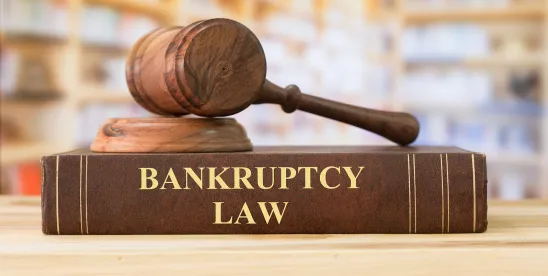Bankruptcy claims trading is an essential area of finance and law, where investors buy and sell the right to receive payments from a company undergoing bankruptcy. Understanding the intricacies of this market is crucial for legal professionals, accountants, and financial advisors who deal with distressed assets, whether for clients or as investors themselves. This article will explore the core concepts of bankruptcy claims trading, the risks involved, and the legal frameworks that govern this process.
What Is a Bankruptcy Claim?
At its core, a bankruptcy claim is the right to be paid as part of a bankruptcy case
Bankruptcy claims are classified based on priority. These categories include:
- Secured Claims: Claims backed by collateral like a mortgage on property. These creditors have the first right to payment because they hold a security interest in the debtor’s assets.
- Unsecured Claims: These claims are not tied to any specific asset, and they are paid after secured creditors. Examples include vendor debts or employee wages.
- Equity Claims: These represent ownership interests in the company. These creditors (shareholders) are the last in line to be paid after all debts are settled.
A key distinction in claims is whether they are ‘allowed’ or ‘disallowed.’
- An allowed claim is one that has been recognized by the bankruptcy court, and thus, is valid in the bankruptcy process.
- A disallowed claim may be challenged by the debtor or other parties, often due to the claimant’s failure to provide sufficient evidence or because the claim is considered invalid.
Types of Claims Traded
The types of claims traded most often are general unsecured claims. These can include:
- Vendor Claims: Claims filed by businesses that have provided goods or services to the debtor but have not been paid.
- Customer Claims: Claims filed by individuals or businesses who are owed refunds or are involved in disputes over purchased goods or services.
- Employee Claims: Claims from employees seeking unpaid wages or benefits.
While secured claims are typically handled by specialized brokers and are not as common in claims trading, they can still be part of large transactions, especially when a major corporation files for bankruptcy.
Who Buys and Sells Bankruptcy Claims?
Bankruptcy claims are often bought and sold by sophisticated investors, including hedge funds, distressed debt investors, and large financial institutions. The buying and selling of claims primarily occurs in the market for general unsecured claims, such as vendor debts, employee claims, and customer claims. These claims can be bought at a discount with the expectation that they will pay out a portion of the total claims pool.
David Karp, a partner at Schulte Roth & Zabel, highlights that although secured debt like bank loans or bonds often receives attention from specialized traders, most bankruptcy claims traded are general unsecured claims. These claims are typically valued by investors who view them as potential investments with the possibility of a high return if the bankruptcy estate is solvent or if the debtor’s assets are restructured successfully.
On the seller’s side, companies or individuals may choose to sell claims to raise immediate capital, especially when facing liquidity issues. Selling a claim allows the creditor to secure cash now, at a discounted price, without waiting for the lengthy bankruptcy process to unfold.
The Dynamics of Case Risk
One of the key risks associated with bankruptcy claims trading is case risk. Case risk refers to the overall risk that a bankruptcy proceeding might result in a low recovery for creditors. If the debtor’s assets are insufficient to cover the total claims, creditors may receive only a small fraction of what they are owed, or in some cases, nothing at all.
Stephen Rutenberg, a partner with Polsinelli, notes that when buying a claim, investors are more concerned with case risk than the specific details of any individual claim. Case risk involves assessing the financial health of the debtor and estimating how much creditors will receive during the bankruptcy process. In some cases, the debtor may not have sufficient assets to pay creditors at all, leading to a complete loss for the claimholder.
On the seller’s side, claim risk refers to the possibility that the debtor or other creditors may challenge the validity of a claim. This could happen if the claim is disputed or if it is considered to be part of a preference payment, which occurs when a debtor pays a creditor within a certain period before filing for bankruptcy. Those payments could be reversed in such cases, and the creditor would have to return the money.
Valuing Bankruptcy Claims
Valuing bankruptcy claims is a complex process that requires a deep understanding of the debtor’s financial situation and the legal landscape surrounding the bankruptcy case. The value of a claim depends on several factors, including the type of claim, the debtor’s assets, and the likelihood that the claim will be paid in full.
In general, claims with higher priority (like secured claims) are more likely to be paid in full, while unsecured claims may receive only a fraction of the value. For example, if a company has $10 million in assets but owes $15 million in liabilities, unsecured creditors may only receive a portion of their claim, if anything, depending on how the court divides the debtor’s assets among the creditors.
A fundamental concept in bankruptcy is the bar date, the deadline by which creditors must file their claims with the bankruptcy court. After the bar date, no additional claims will be accepted unless there is a valid reason for the delay.
Stephen Rutenberg highlights that bankruptcy claims’ value also fluctuates based on market conditions and the case’s specific circumstances. For example, creditors may receive full payment if a company’s reorganization plan is approved. However, if the company is liquidated, creditors may only recover a portion of their claims.
Additionally, claims can be complicated by subordination. Subordinated claims are treated as junior to other claims, meaning they are paid only after other creditors’ claims have been satisfied. Secured creditors will always be paid first, followed by unsecured creditors.
The Legal Framework: Assignments vs. Sales
The legal structure of a transaction when buying or selling a bankruptcy claim is crucial. In some cases, the transaction is structured as an assignment of the claim, while in other cases, it is a sale.
An assignment of a claim simply involves transferring the rights to the claim from one party to another. This type of transaction can sometimes involve fewer legal hurdles, but it does not necessarily transfer the risk associated with the claim.
In a sale of a claim, the seller agrees to transfer both the claim and the associated risk of collection to the buyer. According to Matt Christensen, managing partner of Johnson May, the distinction between a sale and an assignment is primarily a legal formality. From a bankruptcy court’s perspective, the risk associated with the claim remains the same regardless of whether it’s a sale or assignment. However, the transaction’s contractual provisions, such as representations, warranties, and indemnifications, can differ based on whether it is a sale or an assignment.
For example, in a sale, the seller may have to provide a warranty that the claim is legitimate or indemnify the buyer if the claim is later disputed. These legal provisions help shift the risk of claim disputes from the buyer to the seller.
Risk Allocation and Documentation
A point of contention in bankruptcy claims trading is risk allocation. As Rutenberg explains, most sellers in a claims transaction retain some degree of risk, even if the claim has been sold or assigned. This residual risk can arise from the potential for a claim objection or issues related to the claim’s validity.
Buyers and sellers often negotiate terms in sophisticated transactions to protect themselves from unforeseen liabilities. This is typically done through the inclusion of representations and warranties in the contract. These legal terms outline the seller’s responsibilities and ensure the buyer understands the risks.
Conclusion
Bankruptcy claims trading is a complex, high-risk area that requires a thorough understanding of bankruptcy law, financial analysis, and legal procedures. As a financial professional or legal advisor, understanding the dynamics of case risk, claim risk, and claim valuation is crucial to successfully navigating the market.
Whether as a buyer, seller, or legal advisor, seeking guidance from experienced counsel and performing detailed due diligence is vital to mitigating risk and ensuring the transaction aligns with your financial objectives.
To learn more about this topic view Advanced Bankruptcy Transactions / Bankruptcy Claims Trading. The quoted remarks referenced in this article were made either during this webinar or shortly thereafter during post-webinar interviews with the panelists. Readers may also be interested in reading more on claims trading.
This article was originally published here.
©2025. DailyDACTM, LLC d/b/a/ Financial PoiseTM. This article is subject to the disclaimers found here.




 />i
/>i

